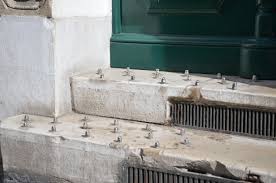Hostile architecture is harming the homeless

The spikes on this ledge are used to deter the homeless from sleeping on the ledge. Credit: Wikimedia Commons
January 27, 2020
The funky benches and spikes popping up all over U.S. cities aren’t just for decor. They are called “hostile architecture”, a process used to discourage the homeless population to stay in an area for too long.
Some types include shortening benches, putting up spikes on the ground, and created slanted benches to make sleeping on it uncomfortable.
The homeless population does not have many places to keep safe and warm, especially during the winter. According to the U.S Department of Housing and Urban Development, 0.17% of the population in the U.S is considered homeless.
This section of the population is often overlooked, and the increase in anti-homeless techniques further isolates them. The usage of “hostile architecture” dehumanizes the homeless within cities.
“Hostile architecture” is not just used to deter the homeless. It is also used to stop skateboarding on public curbs and also to stop loitering. But the main targets are the homeless.
“Hostile architecture” has been criticized for its usage against the homeless, but also due to the fact that it can be difficult for other members of the public to experience. Benches have been made to be uncomfortable so many people cannot sit on them.
The treatment of the homeless within cities has been an increasing topic of concern.
“ I don’t think that it is being treated like it should be. The government could provide more of a system and help out” says senior Ally Jones.
Petitions against the use of hostile architecture have been appearing all over the internet. Will the culture of hostile architecture continue into the future? Only time will tell.

